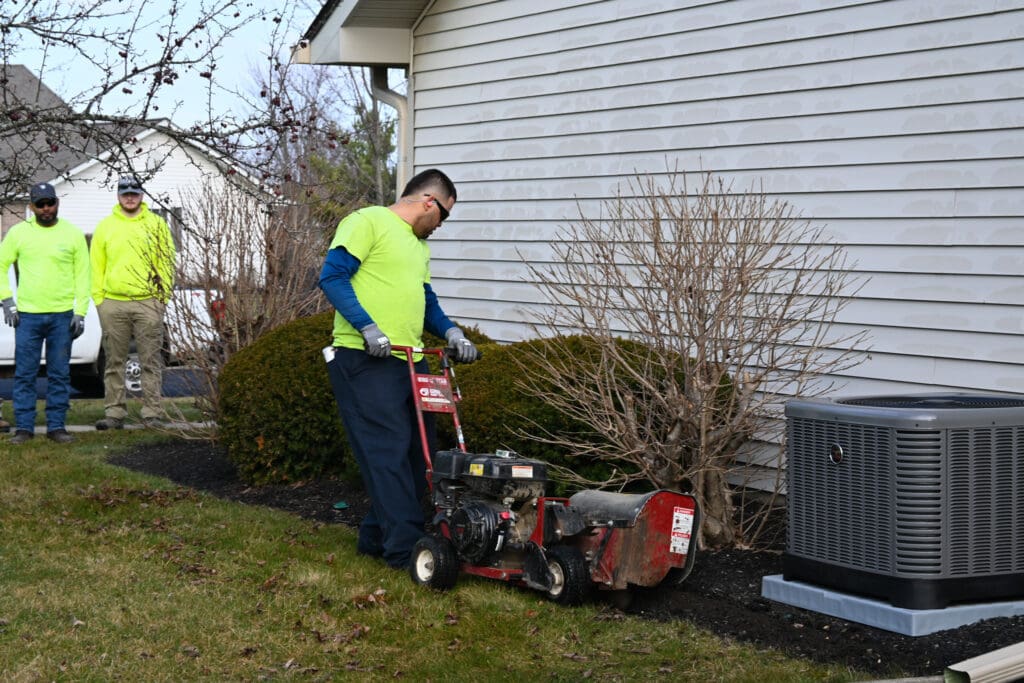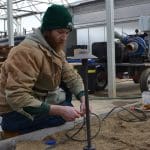
Just like any sports team, you are only as good as your training. If your team doesn’t have a firm understanding of the fundamentals and regularly builds on that understanding, your lawn or landscape company will continue to struggle with quality and efficiency.
“Operation tempo is so high in the spring that trying to hit the pause button to go do training can feel overwhelming and disruptive to the team,” says Joe Lewis, COO of Yard Solutions, based in Groveport, Ohio. “Having a plan having a structure that’s systematic in nature can make it manageable.”
The Benefits of Systemized Training
Taking the time to systemize your training program has many benefits. Lewis says regular training allows them to increase their revenue per hour and meet their quality standards. He points out that training also allows you to cultivate your talent.
Pete Benedict, president of Aiello Landscape, based in Vero Beach, Florida, adds that training is your biggest tool for quality control. He says since they systemized their training it has improved the quality of their clients’ gardens and is something their company is known for.
“It helps them see a career path,” says Dan Crisafulli, vice president of Aiello. “It lays it out in front of them to where if they want to be a crew leader or move over to the irrigation, they see these modules that they can take to increase their pay and that helps them move up in the company.”
Chris Lee, president of EarthWorks, Inc. based in Lillian, Texas, says some of the benefits they’ve experienced after systemizing their training include better work, happier crews, and happier new employees who understand what’s expected of them.
“Another big key to this is we’re able to take the time to explain to people why we do things the way we do them, not just tell them here’s what we do,” Lee says. “When people understand the thought behind it, it makes it much more intuitive.”
Lee says they’ve also had a considerable drop in the frequency and severity of OSHA reportable incidents since implementing their training model.
“The safety aspect is huge because the fewer incidents and the less severity, then the lower your rates get, or at least they don’t continue to climb,” Lee says.
Lee says that their internal referrals have almost tripled since they started their current training program. He says their approach shows they care about the success of the new hire from the very beginning.
“It’s always uncomfortable to be thrown in a truck with four guys that you’ve never met before and then you have to execute a job you’ve never done before,” Lee says. “It’s pretty intimidating. Over the years, we’ve seen a lot of guys that work a day or work half a day and say, ‘I just don’t think this is for me’ and that’s gone away.”
The Challenges of Systemized Training
Some of the challenges that may be holding you back from systemizing your training include a lack of time, not knowing where to start and misconceptions about the costs. Lewis acknowledges that training tends to be the first thing dropped during the busyness of the season. He encourages owners not to think they need to do everything all at once.

“The intent of a systematic approach to training is you have a 30-minute period of instruction, and then you have follow-up conversations or follow-up training,” Lewis says. “You don’t have to do it all at once.”
Another hurdle for systemized training is the concept being too overwhelming to even begin. Lewis encourages reaching out to your local state association, NALP or fellow contractors if you don’t know where to start with systemizing your training.
“Don’t feel you have to do it all by yourself,” Lewis says. “The landscape industry has been around for a while. Learn from other people’s successes and their mistakes.”
Yard Solutions takes advantage of NALP’s Landscape Management Certificate program, Landscape Technician Bootcamp, training publications and Landscape Management Apprenticeship Program.
“I think the Landscape Management Apprenticeship Program is probably the best thing our industry has going for it right now as far as developing a standardized set of training for an employee because it is like having a journeyman license,” Lewis says.
They also take advantage of RanchoMesa’s SafetyOne app. Lewis says it’s particularly useful for refresher training.
“I’ve seen a lot of options out there for training and assisting with that,” Lewis says. “The best I have seen and we currently use is the SafetyOne app from RanchoMesa. It’s just super user-friendly.”
The expense of training can also be intimidating, depending on how your training program is set up. For instance, EarthWorks sets aside five days with a dedicated instructor to train new hires.
“The expensive having a supervisory-level person with a salary and benefits that is not producing any billable work ever is a scary thing,” Lee says. “You’re always watching overhead. You’re always trying to be conservative on expenses but at some point you have to look at the expense of attrition that’s being caused by not training them properly, not onboarding properly.”
Lee says once they wrapped their heads around the full cost of their approach, it turned out it was less expensive to do it the right way.
Advice for Others
For your training program to be successful, you need buy-in from both your employees and the leadership level. Tommy Aiello, founder of Aiello, says it’s important for your team to understand that training is a way for them to grow.
“A lot of guys who want to get advancement, they understand that it starts with asking questions about the training program,” Benedict says. “We put some of the responsibility, quite a bit of it on them. They say, ‘Well, I want to be in this career. I’d like to make more,’ and they start by learning their trade a little better.”
Over the years, Aiello Landscape has added an increased emphasis on safety, company core values and soft skills because they want their team members to understand what they’re trying to do with the organization from the start.
Lee says they went through a lot of trial and error with their training program and decided they were not going to settle for ‘good enough.’ After onboarding an employee, they always ask them what they could have done better with the process.
“Just do it,” Lee says. “It seems scary and it seems like you can’t but I think not doing something just because it seems overwhelming or daunting is not a good excuse. I think you just have to take your best shot at it. Once you take that shot, start tweaking it and changing it and if it’s bad, throw it away and take another shot, but just stay at it until you get something that works.”




